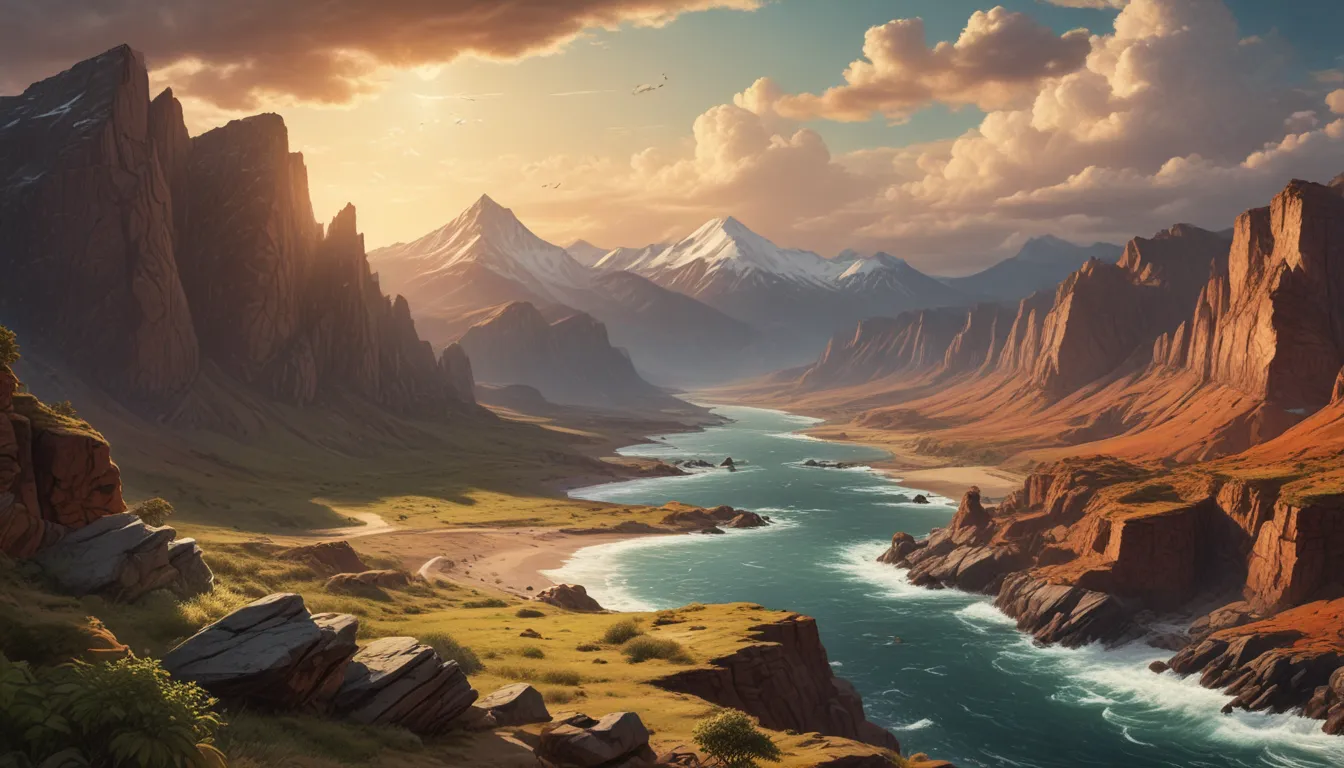A Note About Images: The images used in our articles are for illustration purposes only and may not exactly match the content. They are meant to engage readers, but the text should be relied upon for accurate information.
Tectonic uplift is a mesmerizing geological process that has left a lasting mark on the Earth’s landscape. As tectonic plates collide, move apart, or slide past each other, they cause portions of the Earth’s crust to rise or fall, shaping mountains, valleys, and other topographical features. Let’s delve into the fascinating world of tectonic uplift and uncover 15 intriguing facts about this geological phenomenon. From its impact on the Earth’s surface to the forces driving its occurrence, we will unravel the wonders of tectonic uplift and gain a deeper understanding of how it has influenced our planet.
Key Takeaways:
- Tectonic uplift is instrumental in shaping Earth’s surface over extended periods, creating awe-inspiring landscapes and influencing climate, mineral deposits, and the distribution of plant and animal species. This geological process exposes ancient rock formations, impacts river courses, and plays a crucial role in Earth’s ongoing evolution and interconnected processes.
Unveiling the Essence of Tectonic Uplift
Tectonic uplift, a geologic process, refers to the upward movement of the Earth’s crust resulting from the interactions of tectonic plates. Whether through collisions, sliding past each other, or pulling apart, these movements lead to the formation of significant landforms such as mountains, valleys, and plateaus.
The Slow Dance of Tectonic Uplift
This slow and gradual process unfolds over millions of years, with mountains, for instance, taking shape as the Earth’s crust gradually rises. The majestic Himalayas, including Mount Everest, stand as a testament to the prolonged effects of tectonic uplift caused by the collision between the Indian and Eurasian plates.
The Dynamic Forces Behind Tectonic Uplift
As tectonic plates shift and move, the stress and pressure generated can trigger earthquakes and volcanic activity. These natural phenomena often occur in regions of intense tectonic activity, where the Earth’s crust is undergoing significant uplift.
A Tapestry of Breathtaking Landscapes
Uplifted areas exhibit stunning landscapes characterized by steep cliffs, deep valleys, and dramatic mountain ranges. Iconic locations like the Grand Canyon and the Norwegian Fjords showcase the breathtaking beauty crafted by the forces of tectonic uplift.
Unveiling Ancient Treasures
The upward movement of the Earth’s crust exposes layers of ancient rock formations that were once buried deep beneath the surface. Geologists study these exposed formations to unravel insights into Earth’s history and the processes that have shaped our planet over time.
The Climate Connection
Mountain ranges born from tectonic uplift play a pivotal role in influencing climate patterns. By blocking moisture-laden winds, these ranges create rain shadows and desert regions while also acting as barriers that enhance rainfall in specific areas.
A Symphony of Life
Tectonic uplift’s impact on landscapes can lead to the separation of populations and the creation of new habitats, influencing the evolution and distribution of plant and animal species. This dynamic process plays a vital role in shaping the biodiversity of our planet.
Beneath the Surface
The upward movement of the Earth’s crust traps water underground, resulting in the formation of aquifers that serve as essential freshwater reservoirs in arid regions, supporting ecosystems and human populations.
Unveiling Earth’s Hidden Treasures
Areas of tectonic uplift often harbor valuable mineral deposits such as gold, silver, copper, and uranium. The exposure of deep-seated rocks due to tectonic forces creates favorable conditions for the formation of these precious resources.
The Flow of Rivers
As land uplifts, rivers may alter their courses and shapes, creating new river valleys and changing drainage patterns. The spectacular canyons sculpted by rivers like the Colorado River stand as testaments to the transformative power of tectonic uplift.
The Cycle of Earth’s Crust
Tectonic uplift contributes to the recycling of Earth’s crust by exposing older rocks at the surface, which are then eroded and transported to lower elevations. This perpetual cycle reshapes the Earth’s crust, breaking down old materials and forming new ones.
Traces of Earth’s Movement
The uplift and movement of tectonic plates can generate fault lines, fractures in the Earth’s crust where movements occur. These fault lines have significant implications for seismic activity and the potential occurrence of earthquakes.
A Shift in Sea Levels
Tectonic uplift along coastlines can lead to a relative decrease in sea levels, exposing previously submerged land and creating new opportunities for human habitation and ecosystem development.
The Ever-Evolving Earth
Tectonic uplift continues to shape our planet, playing a vital role in the ongoing evolution of landscapes, the distribution of resources, and the interconnected processes that drive Earth’s dynamic environment.
Embracing the Fascination of Tectonic Uplift
In conclusion, tectonic uplift stands as a captivating natural phenomenon that continues to mold the Earth’s surface. From the birth of majestic mountain ranges to the intricacies of fault lines and the exposure of ancient rock formations, the influence of tectonic uplift is profound and enduring. Delving into this process offers valuable insights into Earth’s history, climate dynamics, and the richness of life on our planet.
FAQs
Explore the answers to common queries about tectonic uplift:
-
What is tectonic uplift?
Tectonic uplift involves the vertical movement of Earth’s crust due to interactions between tectonic plates, resulting in the land rising above its previous elevation. -
What causes tectonic uplift?
Factors such as tectonic plate collisions, subduction, and magma movements beneath the surface contribute to tectonic uplift. -
How does tectonic uplift shape the Earth’s surface?
Tectonic uplift creates diverse landforms like mountain ranges, plateaus, and deep-sea trenches, shaping valleys, canyons, and cliffs in the process. -
Can tectonic uplift trigger earthquakes?
Yes, tectonic uplift can lead to earthquakes as the stress from plate movements is released as seismic energy. -
How long does tectonic uplift take?
Tectonic uplift is a gradual process that unfolds over millions of years, although rapid uplift can occur due to catastrophic events. -
Are there benefits to tectonic uplift?
Indeed, tectonic uplift offers several benefits, creating habitats, fertile soils, mineral resources, and influencing rainfall patterns. -
Is tectonic uplift dangerous?
Tectonic uplift can pose risks, potentially leading to landslides, cliff formation, and seismic activities like earthquakes that may impact infrastructure and human lives.
Engaging with Valuable Information
Our commitment to delivering trustworthy and engaging content is rooted in providing diverse insights and information contributed by real users like you. Each fact on our site undergoes meticulous review by our dedicated editors to ensure accuracy and reliability. Thus, you can trust in our dedication to delivering high-quality and authentic content as you engage with us and deepen your understanding of the world around you. Let’s continue exploring and learning together, embracing the wonders of tectonic uplift and appreciating the Earth’s immense power.






